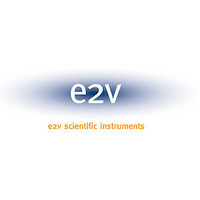TS68C429AVF E2V, TS68C429AVF Datasheet - Page 19

TS68C429AVF
Manufacturer Part Number
TS68C429AVF
Description
Manufacturer
E2V
Datasheet
1.TS68C429AVF.pdf
(43 pages)
Specifications of TS68C429AVF
Operating Supply Voltage (typ)
5V
Operating Supply Voltage (min)
4.5V
Operating Supply Voltage (max)
5.5V
Operating Temp Range
-40C to 85C
Operating Temperature Classification
Industrial
Mounting
Surface Mount
Pin Count
132
Lead Free Status / RoHS Status
Compliant
Available stocks
Company
Part Number
Manufacturer
Quantity
Price
Table 9. Register Control Register Description
Figure 12. Gap Register Description
2120A–HIREL–08/02
Bit
Bit 5
Bit 4
Bit 0 to 3
Function
Not used
Not used
Channel priority: order
•
The gap register is accessible for writing operations only. It contains the value on which
the gap counter will be stopped and will generate the end of the message signal (see
“Inputs” on page 14). The value is interpreted as a multiple of the CLK ARINC period.
The value of the gap register must be chosen so as to generate the end of the message
before the minimal gap as defined in the ARINC-429 norm.
•
The Buffer is made of two 16-bit registers, the Most Significant Word of the message
(MSW) is contained in the lower address register, the Least Significant Word of the mes-
sage (LSW) is contained in the upper address register. For correct behavior, the MSW
must be read before the LSW. They are accessible in read mode only and 16-bit access
is mandatory.
•
The label control matrix is a 256 x 1 bit memory. There is one memory per channel.
The address is driven by the incoming label, the output data is used to validate this
incoming message label (see Figure 13). To program this matrix, the LCMWE (label
control matrix write enable) bit of the receiver-control-register should be set to “1” to
allow the access. At this time, the address is driven by the external address bus and the
data are written from the data bus D7 to D0 (one per channel according to Figure 14).
Any write to a matrix on which the LCMWE is not set will not have any effect. The label
control matrix can be written or read in byte and word mode. In word mode, the state of
D15-D8 is unknown. After complete programming of the matrix, the LCMWE bit should
be reset to “0” to allow normal receiving mode. A “1” in the memory means that this label
is allowed and a “0” means that this label must be ignored.
Gap Register (Figure 12)
Message Buffer
Label Control Matrix
Comments
The lowest value will give the highest priority. Each channel must have a unique
channel priority order.
If several messages are pending, the interrupt vector will account for highest priority
channel.
TS68C429A
19












